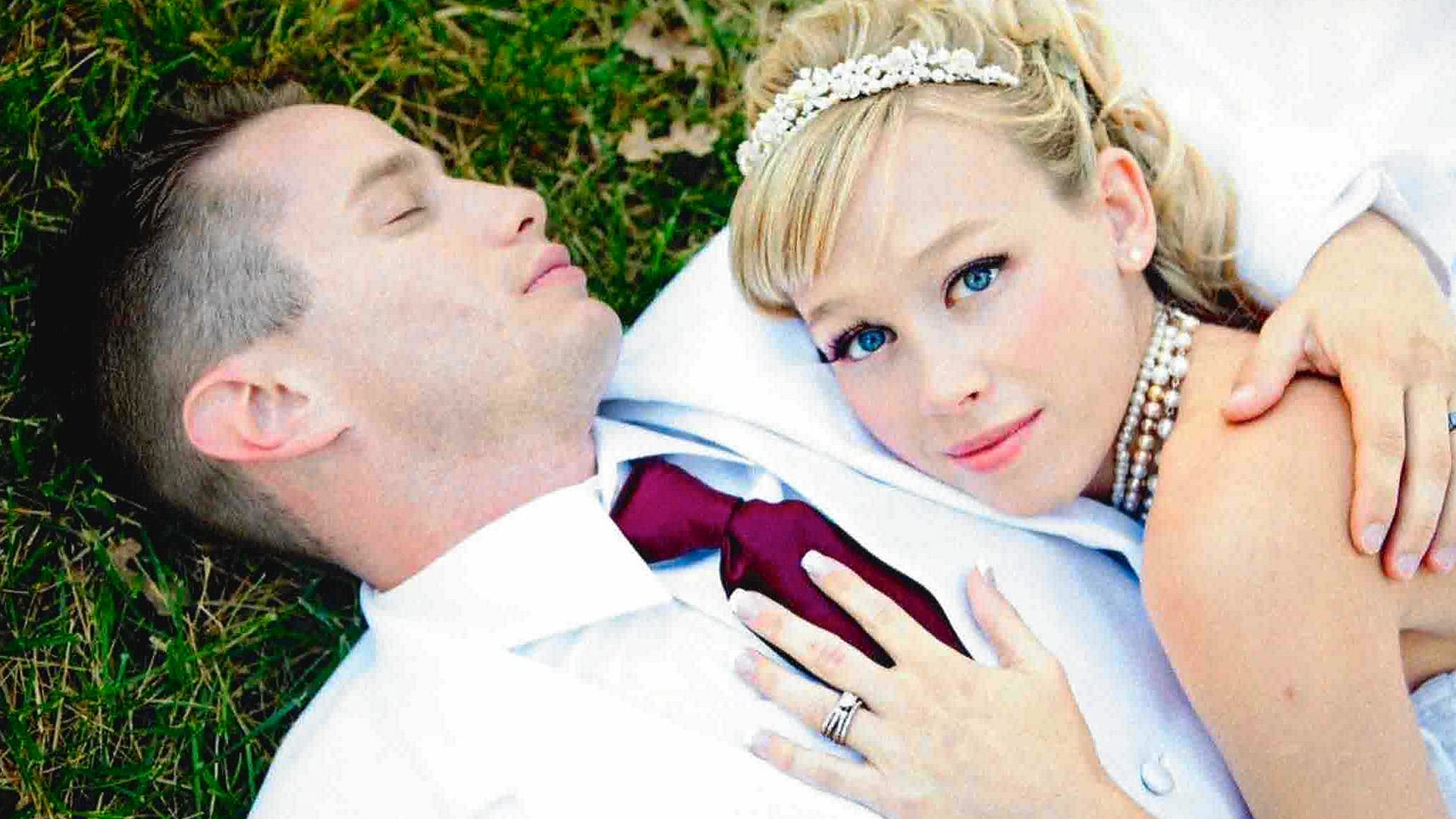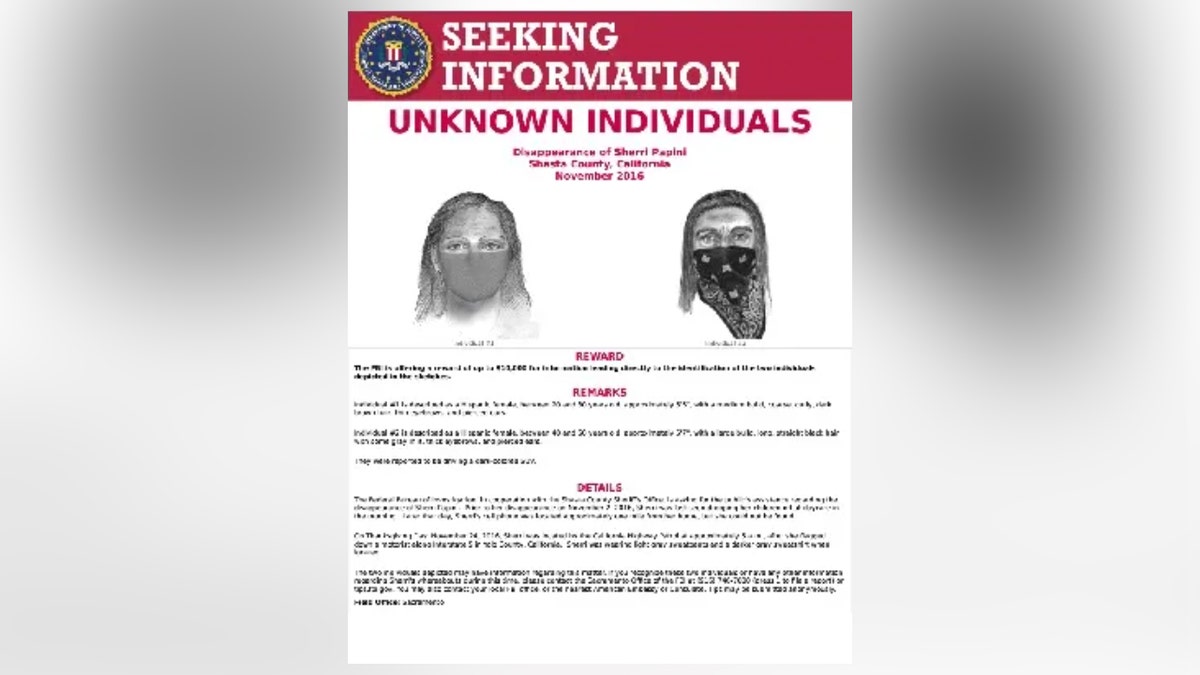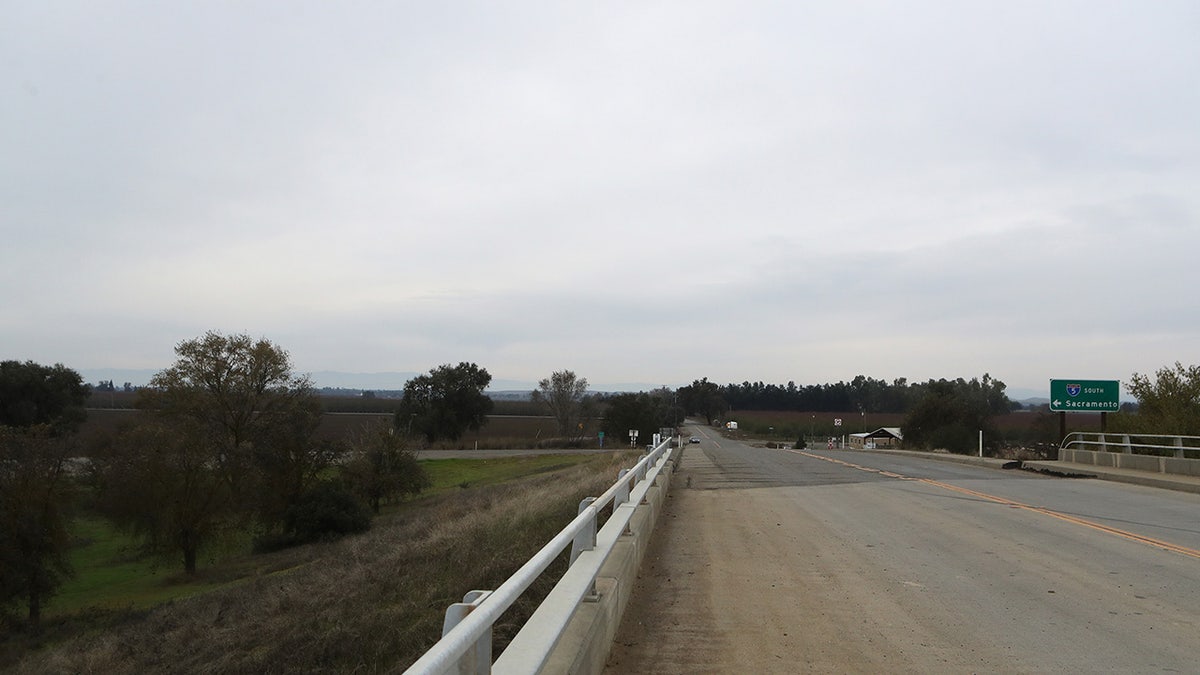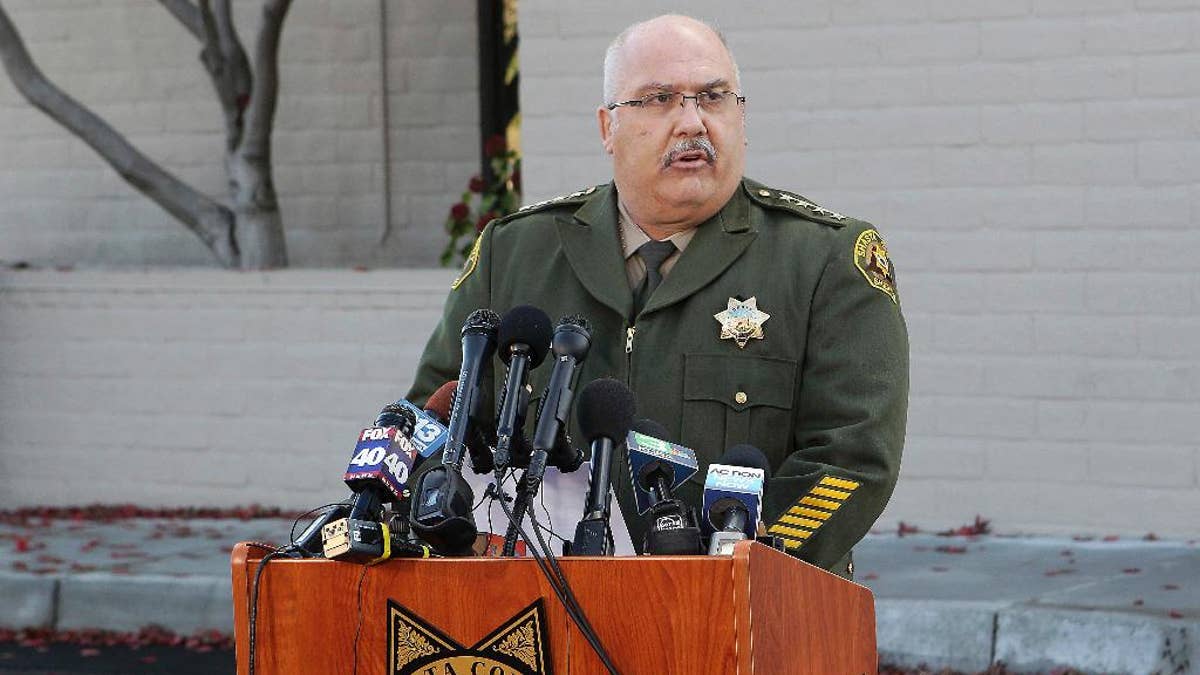West
Trump rally draws swing state voters angry over 'sham' conviction: 'Biggest scam ever'

LAS VEGAS – Former President Trump’s recent rally in the key swing state of Nevada drew thousands of voters eager to show their support for him, including many angry over his “sham” conviction in a New York City court.
Fox News Digital spoke to a number of those waiting hours in the desert heat just to cheer on Trump in his first rally since the guilty verdict on 34 counts of falsifying business records.
“I have always been a Trump fan. My last four years in the military I saw no wars, and I just think he’s the best pick for the United States,” one supporter told Fox, adding that he “laughed” at the outcome of the trial. “I think it was a witch hunt. I think it was devised to incite rage and divide throughout the country.”
TRUMP RILES UP FIERY SWING STATE CROWD IN FIRST RALLY SINCE NEW YORK CONVICTION
Thousands of former President Trump supporters attend a rally in Las Vegas on Sunday. (Fox News Digital/Brandon Gillespie)
Another supporter said he was backing Trump because he would provide more opportunity for Black and Hispanic people, who he said struggled more than others to afford necessities in life, such as a home and an automobile. He added that he did not think the trial was fair and that there was no equal justice between Republicans and Democrats.
Members of one family said they came to the rally to “show how much they love” Trump, and that they were going to support him regardless of what he was going through. “We need him back,” one said.
“We do need him back. He was an amazing president,” another agreed. “Our country needs him, plain and simple. We just need him back.”
WATCH: TRUMP RALLYGOERS REVEAL WHO THEY WANT AS VICE PRESIDENT

A supporter of former President Trump speaks to Fox News Digital at a rally in Las Vegas on Sunday. (Fox News Digital/Brandon Gillespie)
“I really think they’re pulling out all the stops to try and make him not run for president, but in my eyes, I’m still going to vote for him no matter what happens,” one said, while another added the trial was “the biggest scam ever.”
One supporter told Fox he came to the rally “because Joe Biden is ruining this country,” and that Trump’s “sham” trial had exposed a “corrupt system.”
Another admitted she “wasn’t crazy” about Trump during his first term, but that the changes he made were ones she wanted back after experiencing President Biden. She added that the outcome of the trial was “not correct,” and that the justice system was “the first swamp he needs to clear up again when he gets back into office.”
BIDEN CAMP JABS AT TRUMP’S ‘FAILED’ BUSINESS RECORD AS FORMER PRESIDENT LOOKS TO SWAY NATION’S TOP CEOS

Former President Trump arrives to speak during a campaign rally at Sunset Park in Las Vegas on Sunday. (Jim Watson/AFP via Getty Images)
“That was a fix. Anybody that doesn’t know that is not paying attention. You’ve only got to have a third grade education to know that,” one supporter said.
The rally drew thousands of Nevadans to Sunset Park, just miles from the Las Vegas Strip, as polls suggest Trump leads Biden more in Nevada than in any other battleground state won by the president in 2020.
The rally also came just days after a new Fox News poll found Trump leading Biden by five points (50%-45%) in an overall head-to-head matchup.
That lead holds steady (45%-40%) with the inclusion of independent presidential candidates Robert F. Kennedy, Jr. (7%) and Dr. Cornel West (2%), as well as Green Party candidate Dr. Jill Stein (2%).
Get the latest updates from the 2024 campaign trail, exclusive interviews and more at our Fox News Digital election hub.
Read the full article from Here

Alaska
Q&A: What’s in the Water of Alaska’s Rusting Rivers, and What’s Climate Change Got to Do With it? – Inside Climate News

From our collaborating partner “Living on Earth,” public radio’s environmental news magazine, an interview by managing producer Jenni Doering with Jon O’Donnell, ecologist for the Arctic Inventory and Monitoring Network at the National Park Service.
The rapid climate change happening to our planet is often invisible.
Think of rising carbon dioxide levels in the atmosphere, or heat waves across the globe.
But in the far north of Alaska some changes are impossible not to see.
That’s because dozens of crystal-clear streams in the Brooks Range are turning a cloudy orange.
We’re hiring!
Please take a look at the new openings in our newsroom.
See jobs
A 2024 paper published in the Nature journal Communications: Earth and Environment connects the change to rapidly thawing permafrost that appears to be releasing metals like iron into these streams.
Lead author Jon O’Donnell is an ecologist for the Arctic Inventory and Monitoring Network at the National Park Service. This interview has been edited for length and clarity.
JENNI DOERING: So when did you first notice that the streams in Alaska’s Brooks Range looked rusty? And what was your reaction?

JON O’DONNELL: So we were monitoring a site in Kobach Valley National Park, on the Akillik River. And we had been collecting samples there, water samples and biological samples, like fish and bugs. That was in 2017. And when we went back in August of 2018, for a site visit, we noticed that the stream had turned orange. And this was surprising to us. And so you know, we were accessing this site in a small helicopter. And you know, my initial thoughts were, this is kind of an important thing to document. But I kind of thought it was maybe just anomalous, or a case study, where you know, this might just be a one-off thing, but it’d be a good story. So we should do a good job, collect all the samples that we need to collect. So we grabbed water samples, and we collected fish and bugs. And then, when we went back out in 2019, we were flying around the region, and we noticed that there were more streams than we had previously noticed, had turned orange. And that was kind of when I started to think that this might be a bigger issue than this anomalous one stream in Kobach valley, that it may be a bigger issue. And at that point, we started trying to compile observations from across the Brooks Range.
DOERING: So you mentioned that you did some water sampling. And you were finding these minerals in the water samples. What kinds of minerals have you been collecting?
O’DONNELL: Yeah, so we collect water samples from these orange streams, and then nearby clear water streams. And we measure the same suite of chemicals on all of them. So the orange in the stream, that is a reflection of iron. And so those are iron particulates, it makes the stream very turbid or filled with particles. And then those particles often get deposited on the stream bed, and so they blanket the rocks and the sediments in the bottom of the stream. But in addition to the iron, we see that these orange streams are more acidic, so they have a lower pH than, than clear water streams. And there’s a whole range of trace metals that are potentially toxic, both in terms of drinking water and for life that are living in these streams. And so examples of those trace metals that we’ve seen are like zinc and copper and arsenic and cadmium and a range of others that are elevated in concentration in the orange streams.
DOERING: So what do you think is going on here? What do we know about what might be causing this change in the streams and rivers?
O’DONNELL: All of our observations point towards climate and permafrost thaw as a driver of this change. The reasons for that are one, the timing. So we’ve documented over 70 streams and rivers that have changed in the very recent past here, so in the last 10, 10- 5 years. And this is a period of time where the climate has warmed dramatically in the Arctic. There’s also evidence that in these specific watersheds, the climate has warmed past the point where permafrost can stay cold and stay frozen. And so we know that permafrost is thawing in this region. And when permafrost thaws, that changes the hydrology of these watersheds. So you can imagine these mineral deposits being contained in what is essentially a freezer. And as the permafrost thaws, that’s kind of like shifting them to a refrigerator. And so now things can melt, ice can melt, water can flow. And so what we’re seeing is that we think groundwater is flowing through these soils and mineral deposits, where permafrost has thawed. And that is creating this chemical reaction that’s releasing all these metals and acid into the streams.


DOERING: Why are these metals and chemicals concerning? What effects could they have on wildlife and people in the area?
O’DONNELL: Right now we’re working to try to determine if these concentrations of metals have exceeded EPA, Environmental Protection Agency, thresholds for both aquatic life and for drinking water. And so we don’t have a definitive answer on that yet. At the concentrations, we know that this would affect taste of drinking water, so it might be more metallic. But one of our concerns is that these metals will be accumulated from the base of the foodweb through like algae and macroinvertebrates or bugs that live in the bed of the stream, up into fish, you know, similar to what people have shown with like mercury that can bio accumulate and magnify within a food web, and then it gets into fish and then into people if they eat the fish. So we’re concerned because these metals can be toxic both to the aquatic life, but into the people that might rely on the fish as part of their diet. And the stream where we were monitoring, and it changed from clear water to orange, when we first went there, and when it was a clear water stream, it had a really healthy fish population. So lots of small Dolly Varden. And these little resident fish, called slimy sculpin, there was just a lot of them. When we went back after the stream changed color, and it had turned orange, there were no fish. All the fish were gone. We did the exact same protocol for sampling, and the fish had disappeared. And the macroinvertebrate insects, the bugs that reside in the bed of the stream, their numbers declined dramatically with this change. So our thought probably is that the fish migrated out of this river to a better habitat. But there’s also a chance that they were impacted by this bio accumulation of metals up through the food web. And so this was just one instance, where we’ve measured this, we’re continuing our work now to try to figure out really, how are these fish being affected, but our initial thought is that the fish just left, the stream turned orange, and it was not a good habitat for them anymore.
DOERING: It’s amazing how rapidly these changes seem to have happened. I mean, it’s, you know, one year to the next, you notice these really rapid, significant changes, which is rare often when we’re studying what’s happening with climate change. How extensive is this issue in Alaska and beyond?
O’DONNELL: These observations that we have sort of span from the lower Noatak River Basin, in the West, all the way to the Arctic National Wildlife Refuge in the east. So it’s a you know, over 1000 kilometers. We’ve also been getting reports of observations from other areas in Alaska. So the North Slope, north of the Brooks Range, the Yukon River Basin to the south. So these are all watersheds and regions that are in permafrost zones. And so it’s possible that permafrost thaw is driving these observations elsewhere. There is some evidence in the literature for this kind of thing to be happening in non-permafrost regions, such as in the Alps, and in the Andes, in South America, where you have mountain glaciers, and when these glaciers melt, you expose minerals and rocks. And so similar process, except in these other regions, we’re talking about glaciers melting, as opposed to permafrost thawing.
DOERING: You know, this era that we’re living in is often called the Anthropocene, the age that’s shaped by humans. And it sounds like in this case, we’re changing geological processes. I mean, climate change is changing so many different geological processes, but it’s even changing the way that minerals are coming out of the soil.
O’DONNELL: Yeah, and I would say that the Arctic, because it’s so remote, and because of some of the unique features of the Arctic, it’s changing at a faster pace than other regions, like temperate and tropical regions and the globe as a whole. You know, I think the latest evidence shows that the Arctic is warming about four times faster than the Earth as a whole. And because of that, and because of the permafrost, and because of how much carbon and other things are stored in the soils up here, there’s potential for really rapid change, and really dramatic alteration of ecosystems up here that you don’t necessarily see in other parts of the planet. And so yes, the fact that there are these anthropogenic warming effects that are driving climate change in the Arctic and permafrost thaw, and ultimately, this release of mineral compounds, trace metals into streams, that’s a really unique set of factors that we wouldn’t necessarily have foreseen when thinking about climate change in the Arctic.
This story is funded by readers like you.
Our nonprofit newsroom provides award-winning climate coverage free of charge and advertising. We rely on donations from readers like you to keep going. Please donate now to support our work.
Donate Now
DOERING: Jon, what is it like to be studying this and seeing these changes as a scientist?
O’DONNELL: Yeah, so I’ve been working in Alaska now for over 20 years. And I view my job as an ecologist, is basically to document the changes that are occurring. And I’ve worked on a number of different types of studies related to wildfire, permafrost thaw and carbon cycling, things like that in the Arctic. This is by far the most surprising set of observations that I’ve been a part of in my time up here. And I think that it is shocking in terms of how fast it’s happening and the spatial scale at which it’s happening. As somebody who has documented these changes for over 20 years, I’ve become somewhat used to or maybe desensitized from some of the more dramatic things going on. When I sent this paper to my parents who live on the east coast in Philadelphia, they responded by saying that they were depressed and saddened by what they were seeing. And because I’m so used to just functioning as a scientist, I maybe separate my emotional responses from some of these dramatic things that are happening up here. But talking to the public and talking to my family and friends, I’ve kind of been forced to realize that there’s this emotional response that people have to wilderness and to nature, and to places like national parks that people love to go and visit, and when they see them undergoing this sort of change, it’s upsetting.
Arizona
Taking Stock: How Arizona men’s tennis is looking under coach Clancy Shields

The offseason is here, with all of Arizona’s sports done for 2023-24 season and the 2024-25 campaigns still a little ways away.
Which makes this a great time to step back and see how all of the Wildcats’ programs are doing, especially with the impending move to the Big 12 Conference.
Over the next few weeks we’ll take a look at each of the UA’s men’s and women’s athletic programs to see what shape they’re in and what prospects they have for the near future. We’ll break down each team and evaluate how it is performing under its current coaching staff, looking at the state of the program before he/she arrived and comparing it to now while also looking at the upcoming debut in the Big 12 and beyond.
Next up: Clancy Shields’ men’s tennis team
How it looked before
For the longest time, men’s tennis had been one of those sports that Arizona participated in but never really competed in. From 2011-16 the Wildcats didn’t have a winning record, going winless in Pac-10/12 play all but once during that stretch.
But when it came time to make a coaching change, athletic director Greg Byrne made one of the most underrated hires of his tenure in Clancy Shields. A young, up-and-coming coach from Utah State who was Mountain West Coach of the Year in 2016, Shields came to Tucson with a vision to turn Arizona into one of the top programs in the country.
It took a few years, with the UA going winless in Pac-12 play his first two seasons, but in 2019 it broke through with an NCAA Tournament appearance and it’s been nothing but up since.
Where things stand now
Arizona has reached the Sweet 16 in three of the last four seasons, hosting the first weekend the last two years. The Wildcats lost 4-3 at Columbia in mid-May to close out a 29-4 campaign that included winning the final Pac-12 regular-season title and becoming the first non-California team to claim the conference tournament championship.
The UA also won a pair of matches at the ITA National Indoor Championship, knocking off a pair of ranked programs en route to having the highest ITA ranking (No. 5) in school history.
And on the individual front, junior Colton Smith reached the Division I semifinals, became the school’s first All-American since 2006 and qualified for the ATP Next Gen Accelerator program which will give him access to professional tournaments.
Smith is one of three returners from the singles rotation, along with Casper Christensen and Jay Friend. And the Wildcats are bringing in the No. 5 recruiting class in the country, per tennisrecruiting.net, highlighted by 5-star prospect Santiago Padilla Cote and Serbian Zoran Ludoski.
Clancy has had his contract extended multiple times, currently through 2028, but probably needs another raise to ensure he’s not poached.
What life in the Big 12 should look like
Fresh of conquering the Pac-12 in its final year of competition, Arizona now heads to a Big 12 Conference that features the reigning national champion. TCU beat soon-to-be-former Big 12 foe Texas in the NCAA Division I finals.
Baylor, Oklahoma State and UCF also made the NCAA Tournament this past season out of the Big 12, which will feature nine schools in 2025 with the addition of Arizona, ASU and Utah. BYU and Texas Tech are the other men’s tennis participants.
One big question
Is the Sweet 16 the ceiling? Arizona had never gotten out of the opening weekend of the NCAA tourney until 2021, but it’s now done that three times in four years. But each trip to the Sweet 16 has ended in defeat, and half of the 2024 team has graduated.
Getting to host the third round would be the next step in getting over that hump. All three of Arizona’s Sweet 16 appearances have been on the road, with this past season as the No. 9 seed.
California
California mom who faked kidnapping acts like hoax 'never existed' as 'blindsided' husband breaks silence

Sherri Papini’s ex-husband is still wondering why the mother of two faked her kidnapping.
“I do believe the core thing would be attention,” Keith Papini told Fox News Digital. “I think she likes it when people feel for her and look at her as a victim… at anyone’s cost. To be honest, I don’t think she’s capable of seeing what she did and the lives that it affected, the ripple effect, how much pain she caused so many people.”
“I always think about all the people [who tried to help] during those 22 days [she was missing],” Keith reflected. “All the kids that probably weren’t allowed to ride their bikes anymore, all the women that probably didn’t go jogging anymore… I don’t think she has any understanding of how detrimental it was.”
CALIFORNIA WOMAN SUSPECTS RELATIVE WAS A SERIAL KILLER AFTER UNCOVERING FAMILY SECRETS: ‘IT SHOOK ME’
Keith Papini, the ex-husband of Sherri Papini, claims to Fox News Digital he still doesn’t know the whole truth about her story. (Hulu)
After seven years of silence, Keith is speaking out about the high-profile hoax that rocked his Redding, California, community. He’s appearing in a new true-crime docuseries on Hulu, “Perfect Wife: The Mysterious Disappearance of Sherri Papini.”
An attorney for Keith, 41, didn’t immediately respond to Fox News Digital’s request for comment.
“I’ve been approached over the years by a lot of different outlets,” said Keith on why he’s coming forward now.

Keith Papini speaks out in the docuseries “Perfect Wife.” (Hulu)
“I think I was finally in a spot where I could talk about all the pain Sherri caused our family… I wanted to get the truth out about what really happened.”
Keith said before his life turned into a nightmare, it seemed like a fairy tale. He described being instantly smitten by the blue-eyed “hot blonde.” After tying the knot in 2009, he and Sherri welcomed a son and daughter. Life appeared picture-perfect for the couple.

Sherri and Keith Papini share two children, Violet, 9, and Tyler, 11. (Hulu)
“I never felt unloved by her,” said Keith. “She would write songs, she would write me notes constantly. She would tell me how happy she was in our marriage and how we would never get a divorce. She was just so in love with me, and I would repeat those things back to her.”
FOLLOW THE FOX TRUE CRIME TEAM ON X

Keith Papini told Fox News Digital he never felt “unloved” by Sherri Papini during their marriage. (Hulu)
“There was no part of me that ever thought she would fake injuries and have this whole hoax to the extent that she did,” he shared. “I could not foresee that. But I did think we had a happy life. We do have amazing children.”
“I was blindsided,” Keith added.
“I was blindsided.”
Life for the pair began to unravel on Nov. 2, 2016. That evening, Keith reported his wife missing after he discovered she wasn’t home and hadn’t picked up their children from daycare. Her purse and jewelry were left behind.
An extensive search for the missing mom ensued. It wouldn’t be until Nov. 26 that an emaciated Sherri, covered in bruises, was spotted by a driver. She was bound with restraints and found nearly 150 miles from her home.

Keith Papini, right, is consoled by friends and family members. (IMAGN/Andreas Fuhrmann-USA TODAY NETWORK)
Sherri told authorities two masked Hispanic women forced her into an SUV at gunpoint and held her captive.

The FBI poster of the suspects in the kidnapping of Sherri Papini. (FBI)
Her blonde hair had been cut to shoulder-length, and she had a blurred “brand” burned into her right shoulder, authorities said at the time. She had both male and female DNA on her body and clothing.
A GoFundMe campaign raised more than $49,000 to help the family, which the couple used to pay off bills and other expenses, according to a court filing.
SIGN UP TO GET TRUE CRIME NEWSLETTER

A welcome home party for Sherri Papini was held after she was found 22 days later. She was discovered beaten and in chains on Thanksgiving morning. (IMAGN/Andreas Fuhrmann/Record Searchlight-USA TODAY NETWORK)
During the lengthy investigation, Keith willingly took a lie detector test and passed. He also offered “all my phones and computer, anything police needed.”
Keith said that at first, he was elated to be reunited with his love. But then he started to question Sherri’s story.
“There were many things that just didn’t add up, but I wanted to support my wife,” Keith admitted. “If you can’t trust your wife, who can you trust? I just kept saying to myself, ‘I’m going to do everything for my wife.’ I was led to believe that she was happy with us and that she didn’t want any other life with anyone else… I just wanted to support her at all times that we were together. With that being said… I’ll never know all of the truth.”
“There were many things that just didn’t add up, but I wanted to support my wife.”

Sherri Papini was found nearly 150 miles from her home. (IMAGN/Andreas Fuhrmann/The Record Searchlight via USA TODAY NETWORK)
Keith wasn’t the only one to have doubts.
Sherri provided descriptions of her alleged kidnappers to an FBI sketch artist, along with extensive details of her purported abduction. However, investigators later discovered evidence that would contradict her story. In reality, authorities said, Sherri was staying with an ex-boyfriend nearly 600 miles away from her home and had hurt herself to back up her false statements.

Sherri Papini leaves the federal courthouse accompanied by her attorney, William Portanova, after her arraignment in Sacramento, California, on April 13, 2022. (AP Photo/Rich Pedroncelli)
“When a young mother went missing in broad daylight, a community was filled with fear and concern,” U.S. Attorney Phillip Talbert said in a statement at the time. “Ultimately, the investigation revealed that there was no kidnapping and that time and resources that could have been used to investigate actual crime, protect the community, and provide resources to victims were wasted.”
GET REAL-TIME UPDATES DIRECTLY ON THE TRUE CRIME HUB

“When a young mother went missing in broad daylight, a community was filled with fear and concern,” U.S. Attorney Phillip Talbert said in a statement at the time. (IMAGN/Nathan Solis-USA TODAY NETWORK)
The DNA found on Sherri eventually led to the former boyfriend, a court filing revealed. The ex told investigators that Sherri stayed with him at his house during the time she was gone, though they never had sex.

Shasta County Sheriff Tom Bosenko is seen speaking at a news conference to discuss the Sherri Papini case in Redding, California. (Andreas Fuhrmann/The Record Searchlight via AP)
His account was verified when authorities tracked the locations of two prepaid cellphones that they had been using to secretly talk to one another as early as December 2015, according to a 55-page affidavit filed in court to support the criminal charges. A cousin of the former boyfriend also told investigators that he saw Sherri in the man’s apartment twice, both times unrestrained.
Records backed the ex-boyfriend’s story that he rented a car and drove Sherri back to Northern California.

Sherri Papini was arrested in 2022. She was charged with making false statements to federal agents and mail fraud. (IMAGN)
In March 2022, Sherri was arrested and charged with making false statements to federal agents and mail fraud. A month later, she formally pleaded guilty, admitting her kidnapping claims were a hoax.
Keith said that at first, he attempted to protect his young children from the possibility that Sherri’s kidnappers would come to “finish the job.” But after Sherri’s admission, he tried to shield them from the relentless media scrutiny.
“We lived in a sense of fear that somebody was after us,” he said. “If the kids were outside playing, and they saw anybody, it was almost like they were taught to run inside. There’s a part of me that knows that those six years of their childhood were almost stolen away by Sherri.”
‘HOLLYWOOD RIPPER’ MICHAEL GARGIULO ‘LIKED TO WATCH DEATH’ AFTER INFLICTING PAIN ON HIS VICTIMS: ‘IT’S EVIL’

According to the docuseries, Sherri Papini previously described Keith Papini as controlling. He said the allegations were “hurtful” and “untrue.” (Hulu)
According to the docuseries, Sherri claimed that Keith was a controlling spouse. He said the allegations were “hurtful” and “untrue.”
“… She was saying I was beating her and that the cops wouldn’t do anything,” claimed Keith. “… [When it came to] our mutual friends… it was a totally different story… It was hurtful to hear those things at the moment because I’m not sleeping, I’m not eating. I’m fighting for my wife’s life. And to know that she was going around saying these… untrue things, it’s hurtful… But you can see a pattern here.”
In September 2022, Sherri was sentenced to 18 months in prison for faking her kidnapping. She was released early in 2023.

Sherri Papini, center, leaves her sentencing hearing at the Robert T. Matsui U.S. Courthouse and Federal Building in downtown Sacramento on Sept. 19, 2022. Senior U.S. District Judge William B. Shubb sentenced her to 18 months in federal prison for faking her kidnapping in 2016. The judge said he gave her a longer sentence to prevent others from committing similar crimes. (IMAGN)
Sherri has never given a rational explanation for her behavior. Her actions stumped independent mental health experts who said they didn’t conform with any typical diagnosis.
Defense attorney William Portanova blamed it on “what sounds like a fierce storm that was going on for a long time inside her head” but said she is now a changed woman. He noted in a pre-sentence court filing that Sherri was “in pursuit of a nonsensical fantasy.”
After her initial arrest, Sherri received more than $30,000 worth of psychiatric care for anxiety, depression and post-traumatic stress disorder. She billed the state’s victim compensation fund for the treatment and was ordered to pay it back as part of her restitution.
ELISA LAM’S DEATH AT THE NOTORIOUS CECIL HOTEL ‘IS NO CONSPIRACY,’ FORMER MANAGER SAYS: ‘VERY HEARTBREAKING’

Keith Papini said he’ll never know the whole truth about what really happened. Today, Sherri Papini still lives in California. Her ex-boyfriend has never been charged. (IMAGN/Amber Sandhu-USA TODAY NETWORK)
Keith filed for divorce and sought custody of their children after Sherri pleaded guilty. He claimed she had shown “zero remorse.”
“… This wasn’t just some lie she told that ended when she got arrested,” said Keith. “This was a lie she told every day, every minute… Maybe being a stay-at-home mom wasn’t fulfilling her… She has never apologized to me or the children… She acts like it never existed.”
“Perfect Wife” is now available for streaming. The Associated Press contributed to this report.
-

 Politics1 week ago
Politics1 week agoPresident Biden had front row seat to dog, Commander, repeatedly biting Secret Service agents: report
-

 News1 week ago
News1 week ago171,000 Traveled for Abortions Last Year. See Where They Went.
-

 Politics1 week ago
Politics1 week agoTrump travels to DC to meet with congressional Republicans, speak with nation's top business executives
-

 World1 week ago
World1 week agoThe far right will probably fall short in French legislative elections
-

 Politics1 week ago
Politics1 week agoDurbin looks to force Supreme Court ethics bill vote amid Alito controversy
-

 News1 week ago
News1 week agoPhotographer shares ‘magical’ photos of rare white bison calf at Yellowstone
-

 News6 days ago
News6 days agoIt's easy to believe young voters could back Trump at young conservative conference
-

 World1 week ago
World1 week agoHezbollah rains rockets on Israel after senior commander killed













